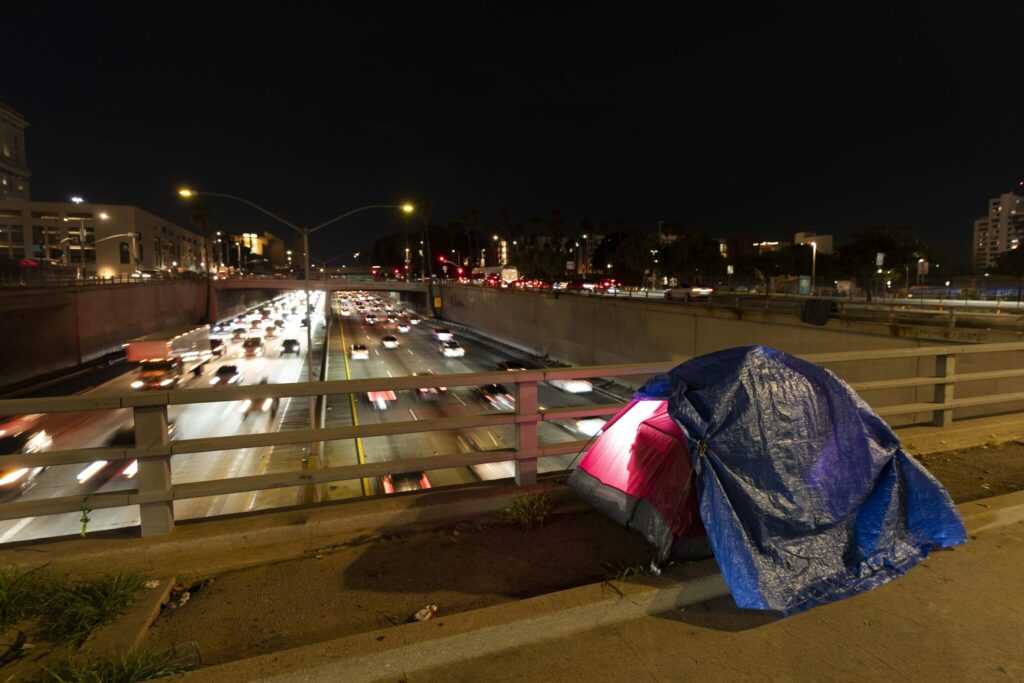The United States experienced a dramatic 12% increase in homelessness to its highest reported level as soaring rents and a decline in coronavirus pandemic assistance combined to put housing out of reach for more Americans, federal officials said Friday.
Quick Read
Significant Increase in Homelessness: There’s been a 12% rise in homelessness in the U.S., reaching the highest level recorded since the initiation of the annual point-in-time survey in 2007. Approximately 653,000 people were counted as homeless, marking an increase of about 70,650 compared to the previous year.
Reasons for the Rise: The surge is partly attributed to soaring rents and a reduction in pandemic-related assistance, making housing unaffordable for many. A notable factor is the increase in individuals experiencing homelessness for the first time.
End of a Downward Trend: This increase has halted a decreasing trend in family homelessness that began in 2012.
Official Statements and Need for Action: HUD Secretary Marcia Fudge emphasized the urgent need for strategies to quickly exit homelessness and prevent it. The data calls for support for proven solutions.
Historical Context: The U.S. saw a decline in homelessness from 2010 to 2017, with focused efforts on housing veterans. The number fell from 637,000 to 554,000 during this period. However, there was a slight increase to about 580,000 by 2020, remaining steady for the next two years, partially due to pandemic-related assistance.
Key Demographics: There’s a disproportionate representation among racial groups. For example, Black individuals, who make up 13% of the U.S. population, accounted for 37% of the homeless population. Similarly, Hispanic or Latino individuals, 19% of the population, represented about 33% of the homeless.
Age Factor: Over 25% of the homeless adults were above 54 years of age.
Rental Housing Challenges: 2022 saw exceptionally challenging rental housing conditions, with rent increases being a significant factor.
Government Response and Success Stories: President Biden’s budget includes measures like guaranteed vouchers for low-income veterans and youths aging out of foster care. Some communities like Chattanooga, Dallas, Newark, Houston, San Jose, and Tucson have seen significant reductions in homelessness through various initiatives
The Associated Press has the story:
US homelessness up 12% to highest reported level as rents soar, coronavirus pandemic aid lapses
Newslooks- WASHINGTON (AP)
The United States experienced a dramatic 12% increase in homelessness to its highest reported level as soaring rents and a decline in coronavirus pandemic assistance combined to put housing out of reach for more Americans, federal officials said Friday.
About 653,000 people were experiencing homelessness, the most since the country began using the yearly point-in-time survey in 2007 to count the homeless population. The total in the January count represents an increase of about 70,650 homeless people compared with a year earlier.
The latest estimate also indicated that people becoming homeless for the first time were behind much of the increase, and it ended a downward trend in family homelessness that began in 2012.
“This data underscores the urgent need for support for proven solutions and strategies that help people quickly exit homelessness and that prevent homelessness in the first place,” House and Urban Development Secretary Marcia Fudge said in a prepared statement.
Going back to the first survey, the U.S. then made steady progress for about a decade in reducing the homeless population as the government focused particularly on increasing investments to get veterans into housing. The number of homeless people dropped from about 637,000 in 2010 to about 554,000 in 2017.
The numbers ticked up to about 580,000 in the 2020 count and held relatively steady over the next two years as Congress responded to the COVID-19 pandemic with emergency rental assistance, stimulus payments, aid to states and local governments and a temporary eviction moratorium.

Jeff Olivet, executive director of the U.S. Interagency Council on Homelessness, a federal agency, said the extra assistance “held off the rise in homelessness that we are now seeing,”
“While numerous factors drive homelessness, the most significant causes are the shortage of affordable homes and the high cost of housing that have left many Americans living paycheck to paycheck and one crisis away from homelessness,” Olivet said.
Within the overall rise, homelessness among individuals rose by nearly 11%, among veterans by 7.4% and among families with children by 15.5%.
People who identify as Black make up about 13% of the U.S. population but comprised 37% of all people experiencing homelessness. People who identify as Hispanic or Latino make up about 19% of the population but comprised about 33% of those experiencing homelessness. Also, more than 25% of adults experiencing homelessness were over age 54.
HUD said that rental housing conditions were “extraordinarily challenging” in 2022, with rents increasing at more than twice the rate of recent years. It noted that trend has subsided since the January count. That could show benefits when volunteers and housing officials around the country begin the next homeless count in just a few weeks.
Officials also noted that President Joe Biden’s budget for this fiscal year has recommended guaranteed vouchers for low-income veterans and youths aging out of foster care, among other investments designed to reduce homelessness.
HUD noted that some communities bucked the national trend. Chattanooga, Tennessee, and the surrounding region, for example, saw a 49% drop from the 2022 count to this year’s. Chattanooga increased efforts to more rapidly connect people to permanent housing and boosted efforts to prevent people from becoming homeless.
Other communities highlighted for a drop were Dallas, which experienced a 3.8% decrease, and Newark and Essex County, New Jersey, which saw a 16.7% drop. Houston has closed numerous homeless encampments across the city and saw a 17% reduction in unsheltered homelessness. San Jose, California, and Tucson, Arizona, were also cited for improvements.
___






